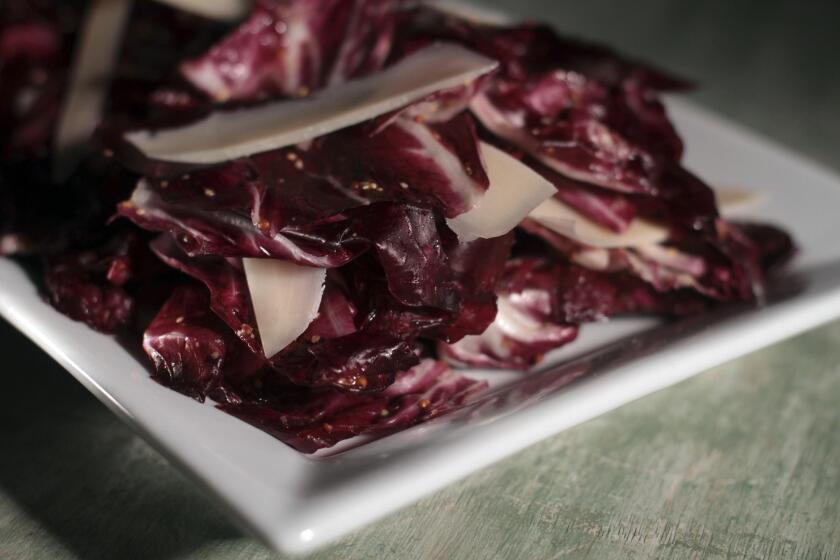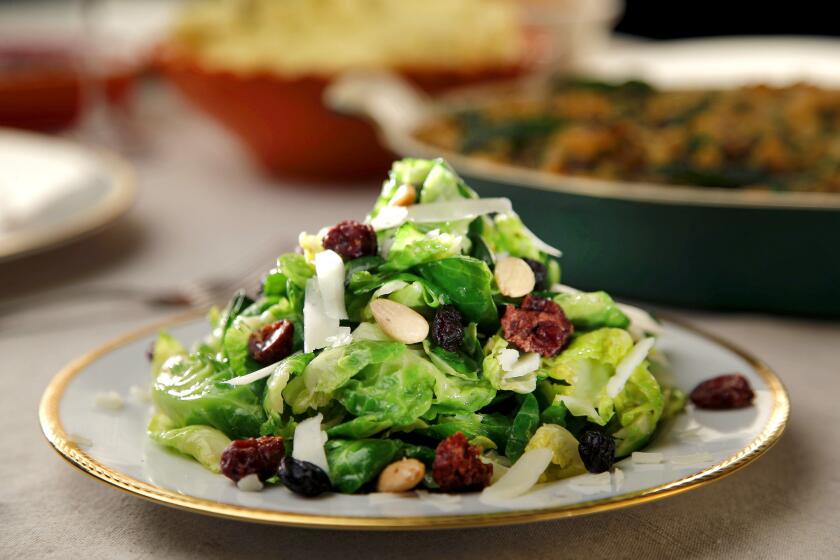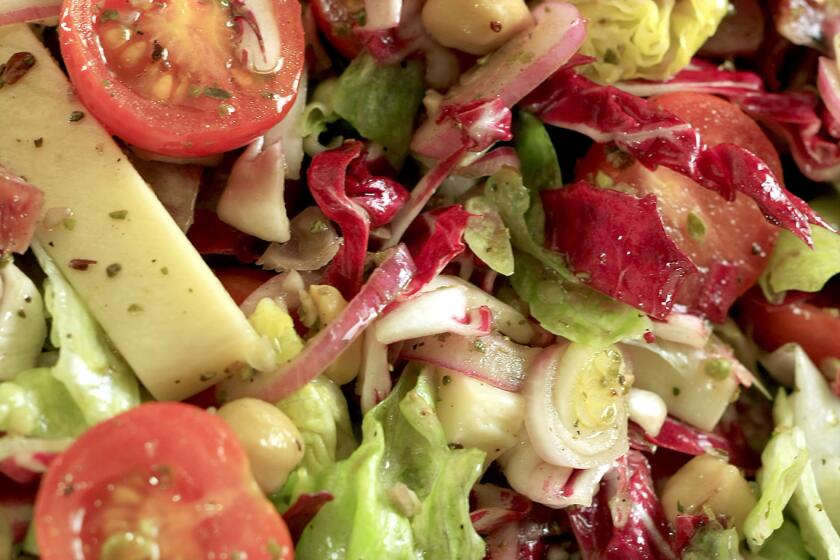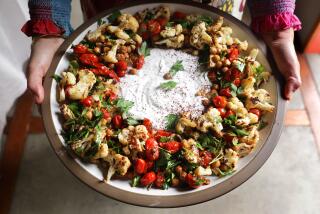The only dressing you’ll ever need for eating your greens
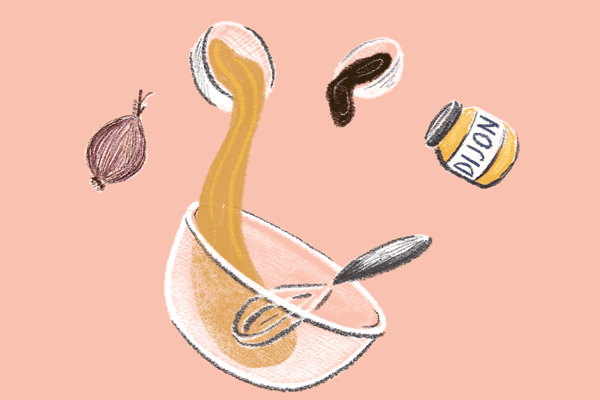
- Share via
With so many of you having to stay home and cook for the first time ever— or more than you have in a long time — we get that it can be overwhelming to have to cook all your meals from scratch. So we’re here to get you started.
Each weekday, we’re going to post a new skill here and go into detail about how to do it — a resource for cooking basics so you can get food on the table and get through this.
A series of simple tutorials for making some basic recipes at home.
Lesson 3: Making vinaigrette
“What’s your go-to basic vinaigrette?” It’s a question that was posed several months ago to a group text thread I was on, and everyone’s responses were slightly different but basically the same. There was acid and oil in varying ratios, some shallots or garlic in one, fresh herbs in another. But while there were surprising differences, the one thing we all agreed on was that “our” vinaigrette was the only one we really ever made and needed. Vinaigrette recipes are like chocolate chip cookie recipes: Once you find one that suits your taste, why bother learning any other?
With everyone needing to eat more greens this week after a load of carb-heavy comfort food last week, now’s the time to learn to make a vinaigrette to dress all the salads you’ll be eating. And the great thing about vinaigrette recipes, as opposed to cookies, is that they are very easy to adapt to your taste and infinitely variable. The basic vinaigrette I make every day is a riff off one I learned in culinary school, which I made over and over again, tweaking it here and there every time until I landed on the recipe for me. And by showing you my recipe, I hope you’ll do the same for yourself.
Start by pouring 1/4 cup of whatever acid you like into a glass measuring cup. I prefer apple cider vinegar for my everyday vinaigrette, but red or white wine vinegar or lemon juice are other regulars; use what you have on hand (but not balsamic — too sweet — or rice vinegar — too mild). Next, I take my Microplane zester and finely grate one small clove of garlic into the vinegar; you can also just very finely mince it with a knife on a cutting board. This does two things: It both flavors the vinegar and thus the vinaigrette, with garlic flavor, but the acidity of the vinegar also tames the punch of raw garlic. If you add raw garlic to the vinaigrette after the oil has been added, it will taste much more pungent. Let the garlic hang out in the vinegar for about 5 minutes to allow the vinegar and garlic time to do their thing.
Next, add a small spoonful of Dijon mustard. This is not mandatory, but Dijon mustard (along with egg yolks and heavy cream) is a natural emulsifier, so I always like to add it to my vinaigrette both for its flavor and its ability to hold everything together smoothly. Finally, pour in 1/2 cup olive oil (or whatever oil you’d normally cook with), which creates a 2-to-1 ratio of oil to vinegar. This ratio creates a pretty acidic vinaigrette, which I personally love, but if you want one that’s more traditional, go with a 3-to-1 or 4-to-1 ratio. And despite what you’ve read for years about slowly drizzling in oil while whisking to create an emulsion for a vinaigrette, it’s not necessary here for two reasons. One, even those slowly emulsified dressings split once they sit for a few minutes, so you end up having to whisk everything back together anyway. And two, the mustard will emulsify the dressing for you.
Once you have everything combined, season it generously with salt and pepper, then vigorously whisk it all together until it creates a smooth vinaigrette. Taste it and see how you like it. Want to add shallot next time? Add it with, or in place of, the garlic. Want to add herbs? Stir them in at the end; Nancy Silverton’s use of dried oregano in her vinaigrette for the Mozza chopped salad gives you that classic Italian red-sauce-joint vibe. And crushed red chile flakes are always a good idea.
If you want to make it even easier, pour everything into a glass jar (I use old jam jars), screw on the lid and give the vinaigrette a shake. This also doubles as your storing vessel so that whenever you need more vinaigrette, you just shake it up and you’re good to go. And once you get good at eyeballing the ratio of oil to vinegar that you like, simply make the whole vinaigrette in the jar to save yourself having to wash the measuring cup and whisk.
Basic vinaigrette
Radicchio salad with mustard vinaigrette
Brussels sprout salad with mustard vinaigrette
Green and yellow beans in lemon mustard vinaigrette
Nancy's chopped salad
More to Read
Eat your way across L.A.
Get our weekly Tasting Notes newsletter for reviews, news and more.
You may occasionally receive promotional content from the Los Angeles Times.


